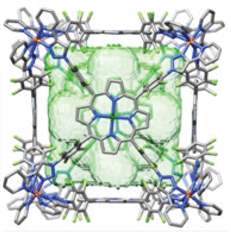Published online by Cambridge University Press: 09 October 2020

One of the leading challenges in chemical sciences is the separation of complex mixtures. This is of vital importance for areas such as commodity chemical generation, where there is a need for the generation of high-purity chemical streams. Due to this, there has been a strong push toward the investigation of new materials capable of achieving chemoselective separation, with self-assembled materials having shown a great deal of promise for such separations. Many self-assembled materials are desirable candidates due to their low-cost synthesis, structural self-regulation, tunable properties, and an overall ease of composite material preparation. In this article, we aim to introduce examples of novel self-assembled materials and their practical usage in chemical separations. The specific approaches to fabricate these materials, as well as the strengths and shortcomings associated with their structures, will also be described. The strategies presented here will emphasize the production and employment of nonconventional self-assembled materials that exhibit a high potential for the advancement of the science of chemical separations.